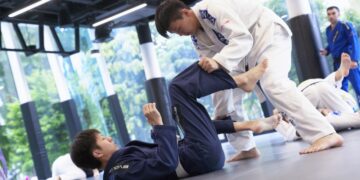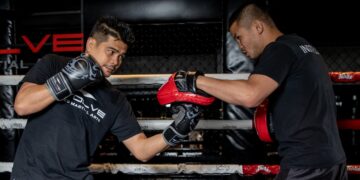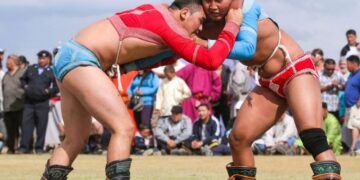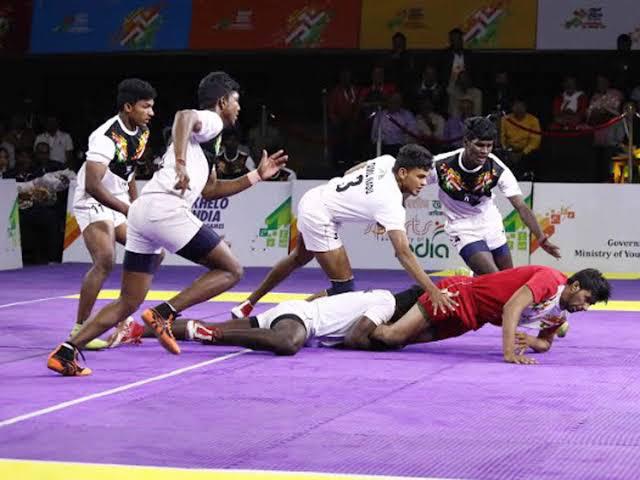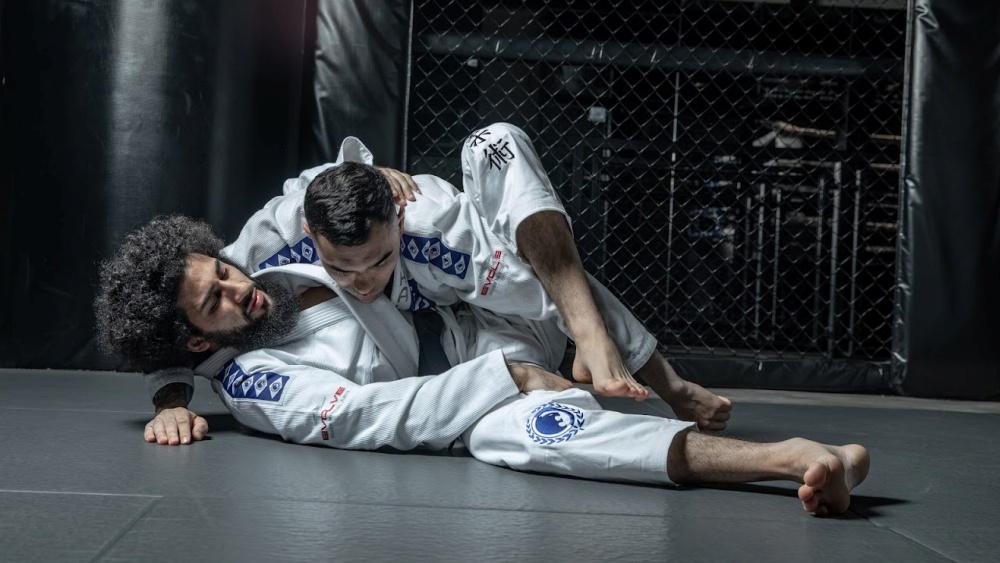
Getting stuck in side control is something many Brazilian Jiu-Jitsu beginners have in common. The bridge and roll is often the first reversal BJJ students learn, followed by basic bottom guard sweeps like the scissor sweep. Sweeps from bottom half guard and side control typically come later.
Side control also arguably gives the person on top more control than any other top position. It isn’t uncommon to see mixed martial arts (MMA) fighters transition from top mount to side control because they feel more confident about holding the position. A good crossface is often enough to make BJJ beginners feel helpless in bottom-side control.
This article will explore some fundamental techniques that will help you escape or sweep opponents from bottom side control.
Framing, Hip Movement, And Staying On A Side
Framing, hip movement, and not allowing your opponents to flatten you out are the fundamentals of bottom control. You always want to be on a side while facing your opponent in any bottom position. This little detail makes it considerably more difficult for opponents to work submissions or keep you pinned down. It’s the first thing you should do if you end up in a bottom position.
Framing involves using your arms to create space from opponents. You can do this in side control by pushing on their neck with your forearm, while pushing on their hips with your other hand. Framing allows you to create enough space to bring your knee between you and your opponent to regain your guard. Shrimping is the hip movement you combine with framing to restore your guard from bottom guard positions.
Don’t allow opponents to flatten you again after creating space. Stay on your side, keep framing, and use your feet to push off on their hips to create even more space. Make sure you keep your elbows inside in bottom positions to make it harder for opponents to secure submissions like armbars.
Mastering Bottom Side Control For BJJ And MMA
Now that we’ve gone over the basics of staying safe in bottom-side control, let’s go over some techniques that allow you to turn the tables from the position.
1) The Bridge-And-Shrimp Escape
This is one of the most reliable escapes you can pull off from bottom-side control. It’s one of the first escapes from side control that BJJ instructors teach, and it should be easy to learn if you paid attention when fundamentals like shrimping and bridging were taught.
Here’s what the technique looks like:
- Frame and block your opponent’s crossface by pushing your top forearm against their necks, while holding on to their lapel or triceps with your other arm.
- Bridge high, driving your hips up to disrupt your opponent’s balance (Kuzushi) and create space.
- Shrimp right after, and wedge your knee between you and your opponent.
- Use the leverage your knee gives you to regain half guard or full guard.
Why It Works: Bridging disrupts your opponent’s base, while shrimping allows you to create space.
2) The Underhook Escape
Here’s another effective escape that helps many BJJ newbies avoid getting stuck in half guard. It’s most effective when your opponent leaves enough space for you to thread your far arm under their armpit.
Here’s what the technique looks like:
- Fight For The Underhook: Swim your bottom arm under your armpit.
- Come Up To Your Elbow: Use the underhook to sit up, driving your shoulder into their chest.
- Get Up Or Take The back: Use the leverage the underhook gives you to turn into them to take their backs or get up.
Why It Works: The underhook disrupts your opponent’s ability to apply top pressure, allowing you to turn into them, which changes the power dynamic in the position.
3) The Knee Shield Recovery
This is pretty much the bridge and shrimp escape without the bridging part. Work on shrimping enough, and you should be able to perform the movement in any bottom position, regardless of how much top pressure opponents put on you.
Here are the steps involved:
- Frame And Shrimp: Create enough space to insert your bottom knee vertically against their chest to establish a knee shield.
- Lock Half Guard: Wrap your top leg around your opponent’s closest leg and pin it to the mat.
- Sweep: Use your knee shield to push your opponent back and sweep them over their trapped leg.
Why It Works: The knee shield prevents your opponent from establishing a crossface, while giving you control
5 Tips To Avoid Getting Stuck In Side Control
Some of the things you should keep in mind to increase your ability to turn the tables on opponents in side control include:
- Relax And Breathe: Panicking drains energy and creates openings opponents can capitalize on. Instead of spazzing out trying to escape the position, focus on incremental progress, creating a little space until you have enough to pull of techniques.
- Chain Techniques: If one escape fails, transition to another. For example, attempt the bridge and shrimp, then switch to an underhook escape if your opponent doesn’t budge.
- Drill Transitions: Practice transitioning from different side control escapes to improve fluidity.
- Anticipate Your Opponent’s Moves: Anticipating what your opponent is looking to do allows you to choose which escape would be most effective.
- Get Comfortable With Being Uncomfortable: The most effective way to improve your bottom side control game is to put yourself there often.
Make Bottom Side Control Your Favorite Position
Escaping from bottom side control isn’t as hard as many beginners think. It’s a matter of improving your shrimping ability, understanding the importance of framing, and securing underhooks when possible.
Drill the abovementioned escapes often enough, and it’ll be virtually impossible for anyone to keep you trapped in side control.
You may also like:
Understanding The Diagonal Ashi In Brazilian Jiu-Jitsu
In the ever-evolving world of BJJ, there has been a noticeable shift in how practitioners approach the ground game. Many practitioners now emphasize their leg lock game, which is now considered a must-learn across all…
Fear is a natural part of competition, especially in combat sports like Brazilian Jiu-Jitsu (BJJ), Muay Thai, boxing, and mixed martial arts (MMA). Whether you’re a first-time white belt entering your local tournament or a…
Brazilian Jiu-Jitsu is a martial art that offers many ways to finish a match. A common yet practical way to do this is to attack the opponent’s arm with a variety of arm locks. In…
Every year, athletes embark on their Brazilian Jiu-Jitsu journey filled with hope to make their dreams come true and make history. With a month coming before the World IBJJF Jiu-Jitsu Championship 2025, grappling fans can’t…
The back mount is the most dominant position in BJJ. It allows you to set up your attacks without your opponent peripherally seeing how you set them up. Because of this, opponents will rely on…
If you’ve ever watched a fight and thought, “Wow, this guy never backs off?” You’ve witnessed pressure fighting in action. Pressure fighting in martial arts is the art of making your opponent miserable with constant…
Grip strength plays a crucial role in mixed martial arts (MMA) and many grappling styles like Brazilian Jiu-Jitsu and wrestling. It turns out that having a strong grip doesn’t just help you to open jars;…
Flexibility plays a crucial role in how well you can execute many fighting techniques. For example, you need a certain level of hip flexibility to throw high kicks in Muay Thai or to use the…
Martial arts training might be what you need if you’re interested in a more exciting way to rebuild that knee, shoulder, or back. Signing up for classes won’t automatically give you some magical ability to…
Any parent already knows that raising children can be as challenging as trying to juggle two flaming swords while blindfolded on a treadmill. Many are turning to martial arts classes to get their kids off…
Mixed martial arts (MMA) is one of the fastest-growing sports today. MMA attracts a wide spectrum of athletes and viewers from all walks of life. From the likes of Mark Zuckerberg to your regular weekend…
Your isometric strength plays a role in martial arts like Brazilian Jiu-Jitsu, Wrestling, Boxing, and Muay Thai, whether you realize this or not. Anything that requires holding a position while fighting against tension and other…






